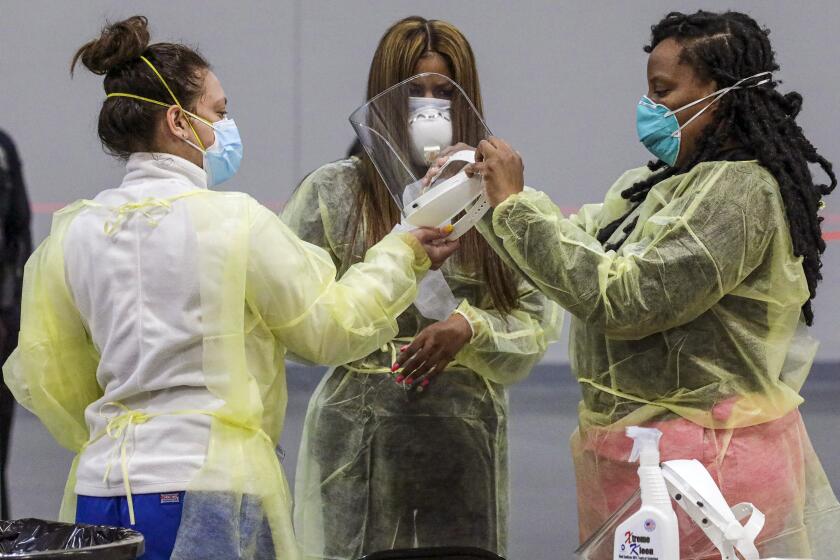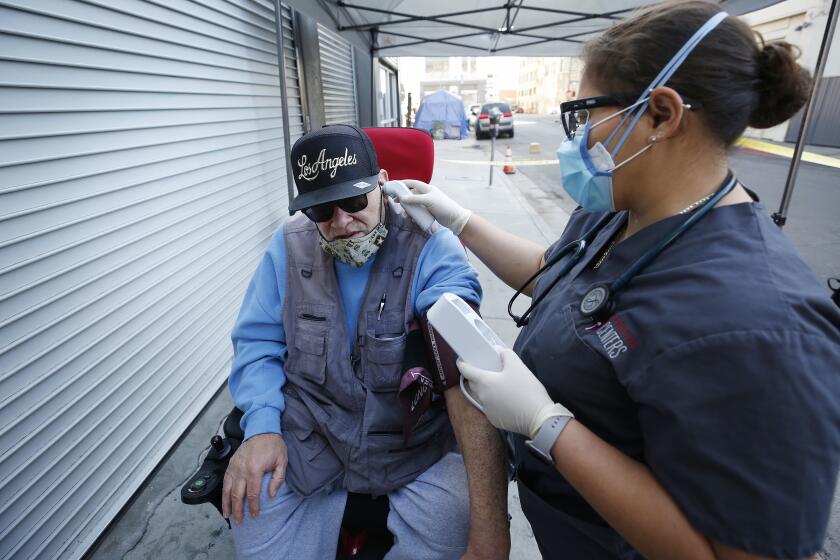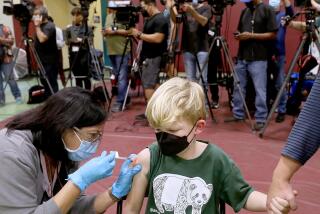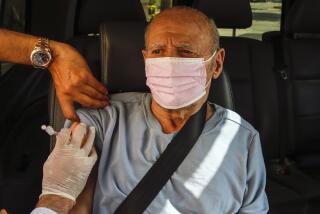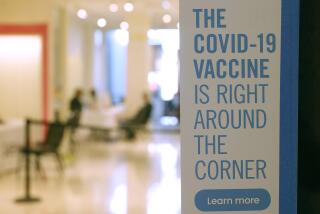California to open COVID-19 vaccine to people with cancer, obesity, other conditions
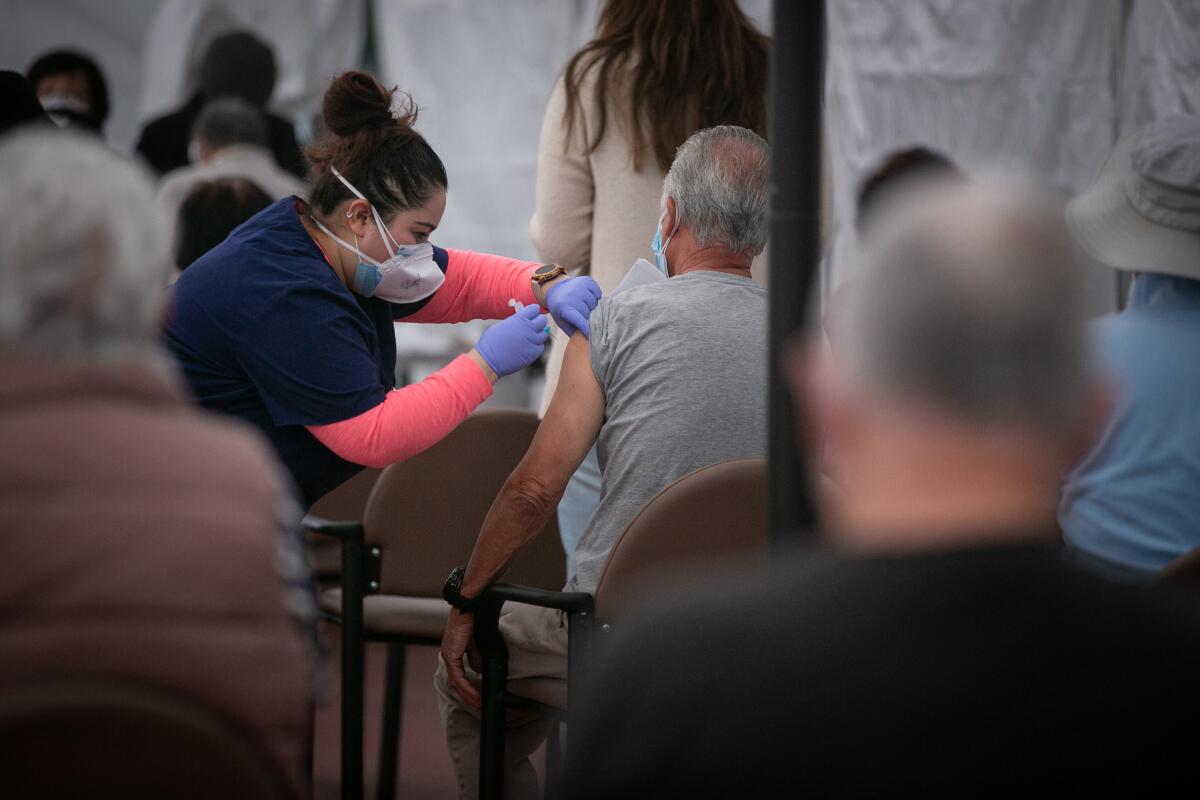
California officials said Friday that people ages 16 to 64 who are disabled or at high risk for morbidity and mortality from COVID-19 will be eligible for vaccination beginning next month.
The move comes after weeks of debate over who will get to the front of the line for precious vaccine doses, which remain in short supply. Officials estimate the move will make 4 million to 6 million more people eligible, bringing the total of eligible Californians to 17 million to 19 million, or about half the state.
But supplies remain very limited. Based on current allocation projections, California won’t come close to meeting demand for some time. It will ultimately be up to local providers to decide who gets the vaccine immediately, with medical workers, first responders, people 65 and over, teachers and essential workers all vying for shots.
The underlying conditions explicitly stated under the latest guidance include cancer, chronic kidney disease of stage four or above, chronic pulmonary disease, Down syndrome, immunocompromised immune system from solid organ transplant, pregnancy, sickle cell disease, heart failure, coronary artery disease, cardiomyopathies (excluding hypertension), severe obesity, and Type 2 diabetes mellitus.
The state also broadly defined eligible individuals as those who are likely to develop a life-threatening illness or death from a COVID-19 infection or are limited in their ability to receive ongoing care or services vital to their survival.
These groups can begin getting the vaccine March 15.
Who gets California’s COVID-19 vaccine? A ‘Sophie’s Choice’ moment for many in need.
State Health and Human Services Secretary Dr. Mark Ghaly said implementation and verification details were still being sorted out.
When asked about the state’s announcement, Dr. Paul Simon, chief science officer for the Los Angeles County Department of Public Health, said he hopes many of the county’s providers “will be vaccinating their own patients, will understand the medical conditions that their patients have” and that “the implementation would be relatively straightforward.”
But he added during a briefing Friday, “it will also require, I think, very clear definitions of who is eligible under this new phase.”
“It certainly means that there’s even more urgency now to getting a greater supply of vaccine,” he said.
That concern has been shared by others as vaccine eligibility continues to expand beyond allocation.
“Reprioritizing who gets doses does not get us more doses, and that’s what we need,” said Kat DeBurgh, executive director of the Health Officers Assn. of California.
The news follows a meeting last week set by a high-level task force with members from the departments of Aging, Disability Services and Health and Human Services that hashed out details of a proposal raised by a vaccine advisory committee. The working group responsible for drafting state vaccine guidance had said it would make its official recommendation to prioritize people with disabilities and underlying health conditions.
Gov. Gavin Newsom’s previous announcement last month that the state would shift vaccine priority to an age-based eligibility structure sparked concerns from groups representing the disability community who were facing longer waits to get vaccinated, with hundreds sharing their frustrations on social media.
Friday’s announcement was welcomed by advocates and activists.
“Most disabled people felt like, OK, I guess we’re never going to be prioritized,” said Lasharn Maelee Johnson, 32, of Long Beach, who has severe asthma and other chronic health conditions. “It’s nice that we don’t feel like we’re being left to die.”
“It’s never going to be a perfect system,” said Ntombi Peters, who uses multiple inhalers and daily medications to control her severe asthma and is on immunosuppressant drugs to treat multiple sclerosis. “But I appreciate that the advisory committee and task force members listened to our concerns and revised the priority list. This has been a huge stressor for me and so many others, but knowing there is light at the end of the tunnel helps tremendously.”
The new priority list brought relief to some who hope the update will help those in marginalized communities who may have previously been left out.
“I hope this change will adhere to equity within the disabled community, namely in regards to the Black and brown community and higher risk-populations,” said Reid Davenport, 30, a filmmaker in Oakland who has cerebral palsy. “In the meantime, I feel a sense of relief that I hope will prove warranted.”
“There’s no question that there’s going to be a lot of challenges, but there’s also no question that this new policy is dramatically better,” said Andy Imparato of Disability Rights California, who also serves on the state’s vaccine advisory committee. “This creates a safety valve for people under 65” who may still face significant risk.
Imparato said he hoped the new rule would ease the disparities that have plagued the vaccine rollout so far. Many of the same factors that have made the pandemic more deadly in Black, Latino and Native American communities also create or intensify disabilities, so extending the current tier to include those with significant comorbidities would mean more doses reaching hard-hit communities than in an age-based system, he said.
Most of L.A. County’s limited vaccine supply is going to giving second doses as local and state officials say they need more shots.
“We can look on a map and say which one has the most COVID cases — these are often the same communities that have higher rates of diabetes and other comorbid conditions,” said Dr. Kirsten Bibbins-Domingo, an epidemiologist and co-founder of the UCSF Center for Vulnerable Populations. “But that type of language is hard to implement, and programs that are hard to implement create problems with efficiency and problems with equity.”
In particular, she and others worried that the documentation requirement could gum up the works of California’s already sluggish vaccination program.
“We need to be careful about not splitting hairs about who’s disabled enough to get vaccinated,” said Dr. Alyssa Burgart, a bioethicist at Stanford. “It’s so easy to show what your age is. But there is immense variety in the type of disability that can place you at higher risk from COVID.”
Alice Wong, a 46-year-old disabled activist in San Francisco who created the hashtag #HighRiskCA in response to the state’s vaccine priority list, agreed.
“There are lots of people who don’t have a primary care provider [to provide documentation],” she said. “We don’t need more hurdles.”
Some believe that while Friday’s announcement was a sign of progress, earlier action needs to be taken to implement prioritization sooner.
“The timing for the directive to go into effect March 15 is still problematic, which we believe will be too late for many people with disabilities who could succumb to COVID in the meantime,” said Judy Mark, president of Disability Voices United. “Dr. Anthony Fauci [recently] said that by April, getting vaccines will be ‘open season.’ We hope to work with the state to move up the timing in order to save more lives.”
Claudia Center, legal director with Disability Rights Education and Defense Fund, echoed the sentiment.
“We are pleased to see the explicit inclusion of some people with high-risk disabilities, but the rollout will be too late for many, and the guidance excludes others. The state must immediately collaborate with its disability partners to carefully plan implementation so that people with high-risk disabilities can safely and effectively access the vaccine. We continue to urge the state to prioritize Californians who receive home and community-based services, and low-income people of color with disabilities,” she said.
Times staff writers Luke Money and Melody Guttierez contributed to this report.
More to Read
Sign up for Essential California
The most important California stories and recommendations in your inbox every morning.
You may occasionally receive promotional content from the Los Angeles Times.
